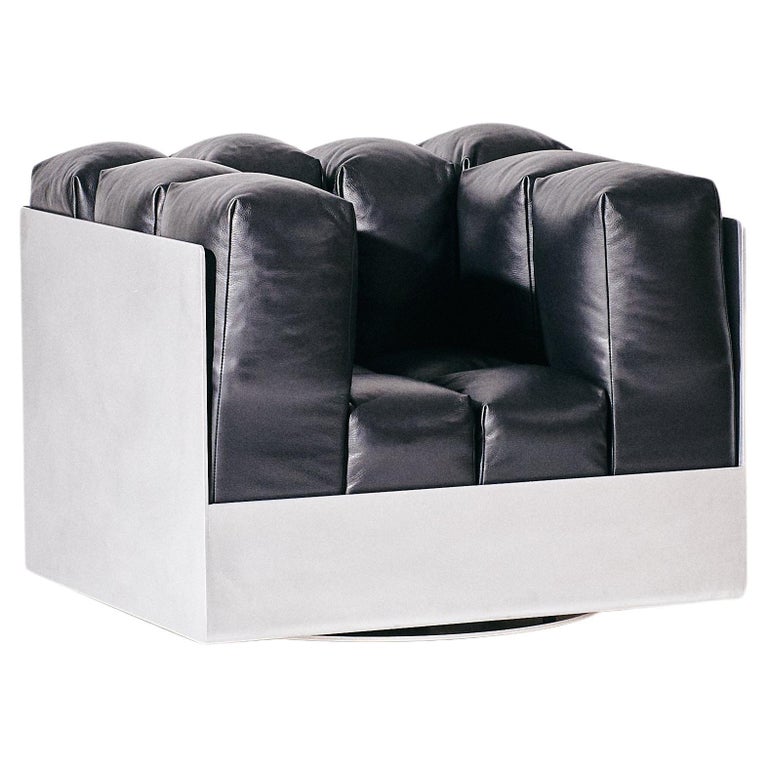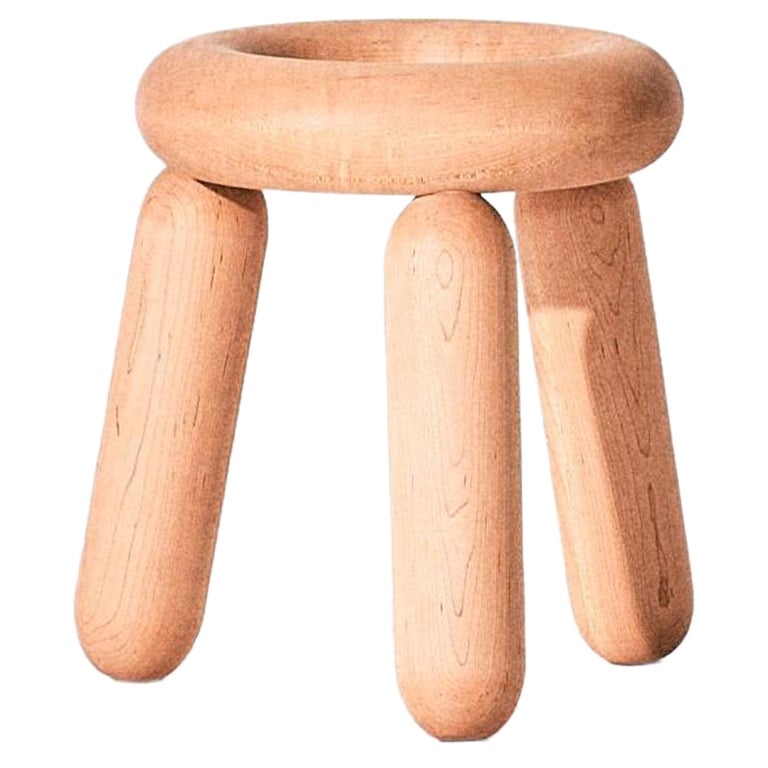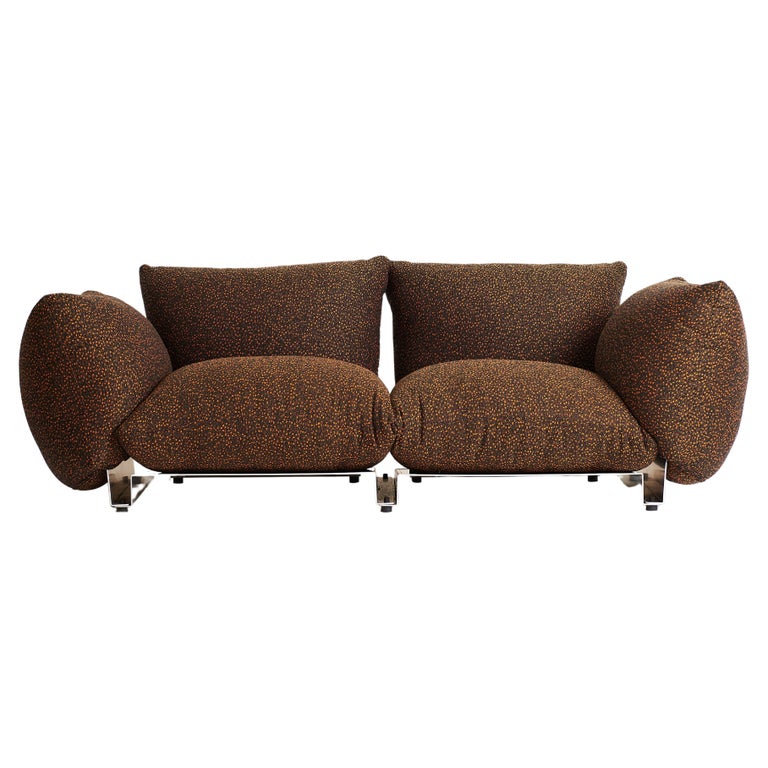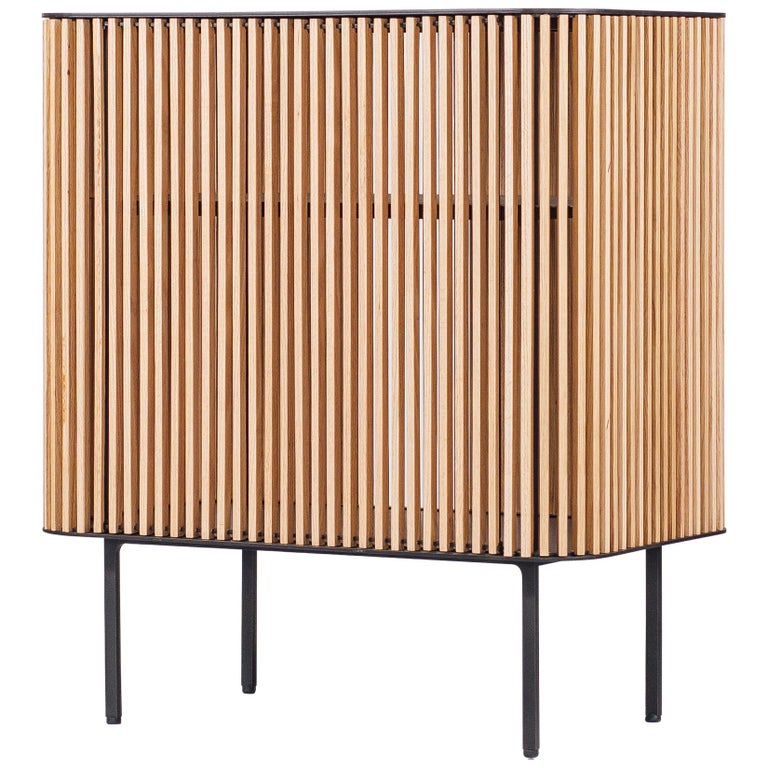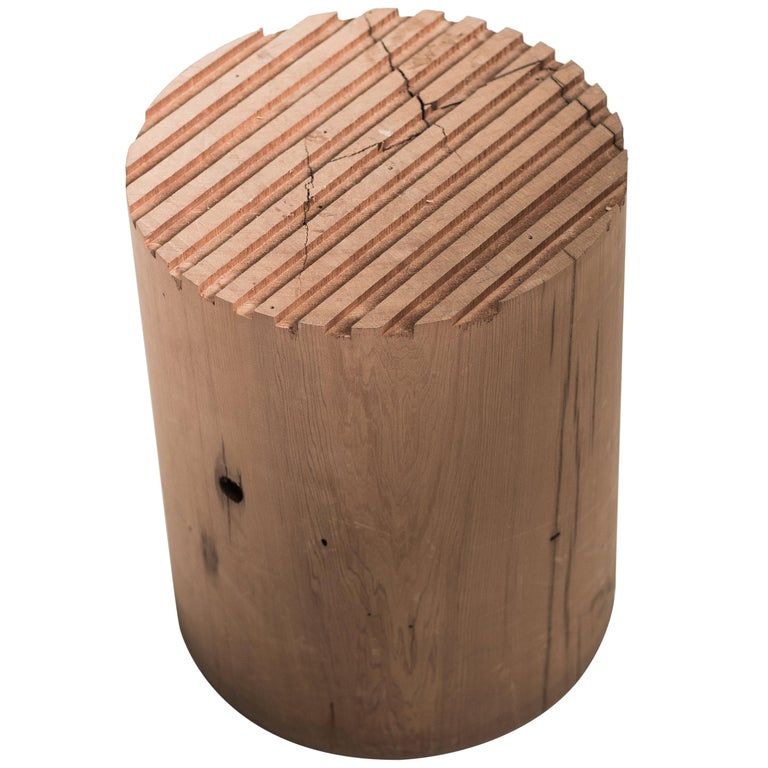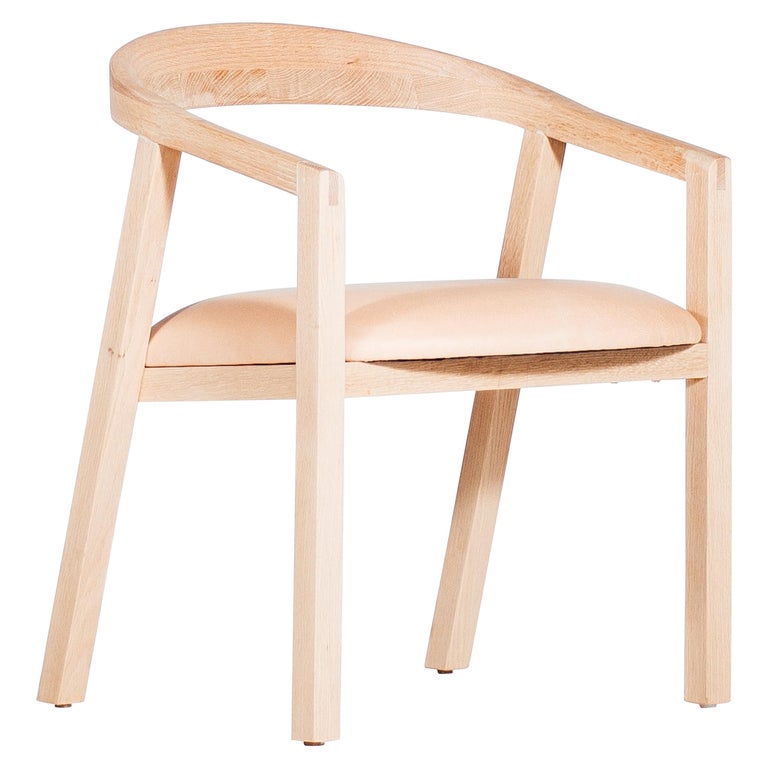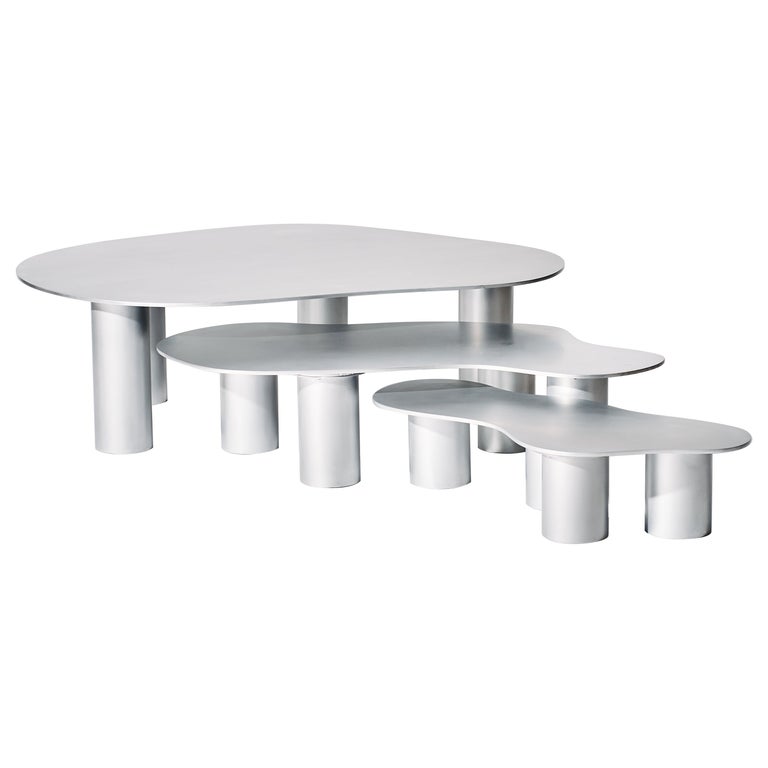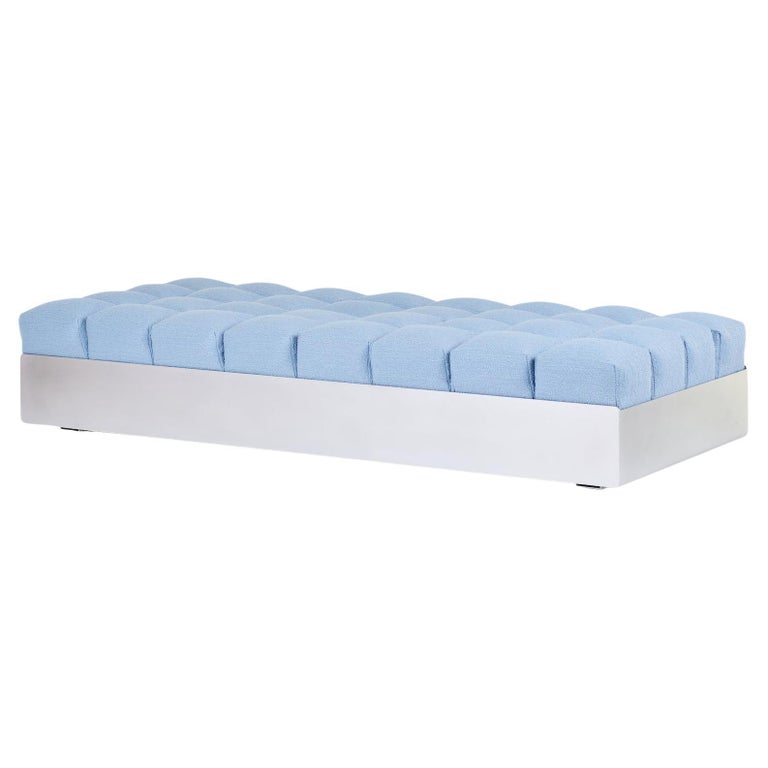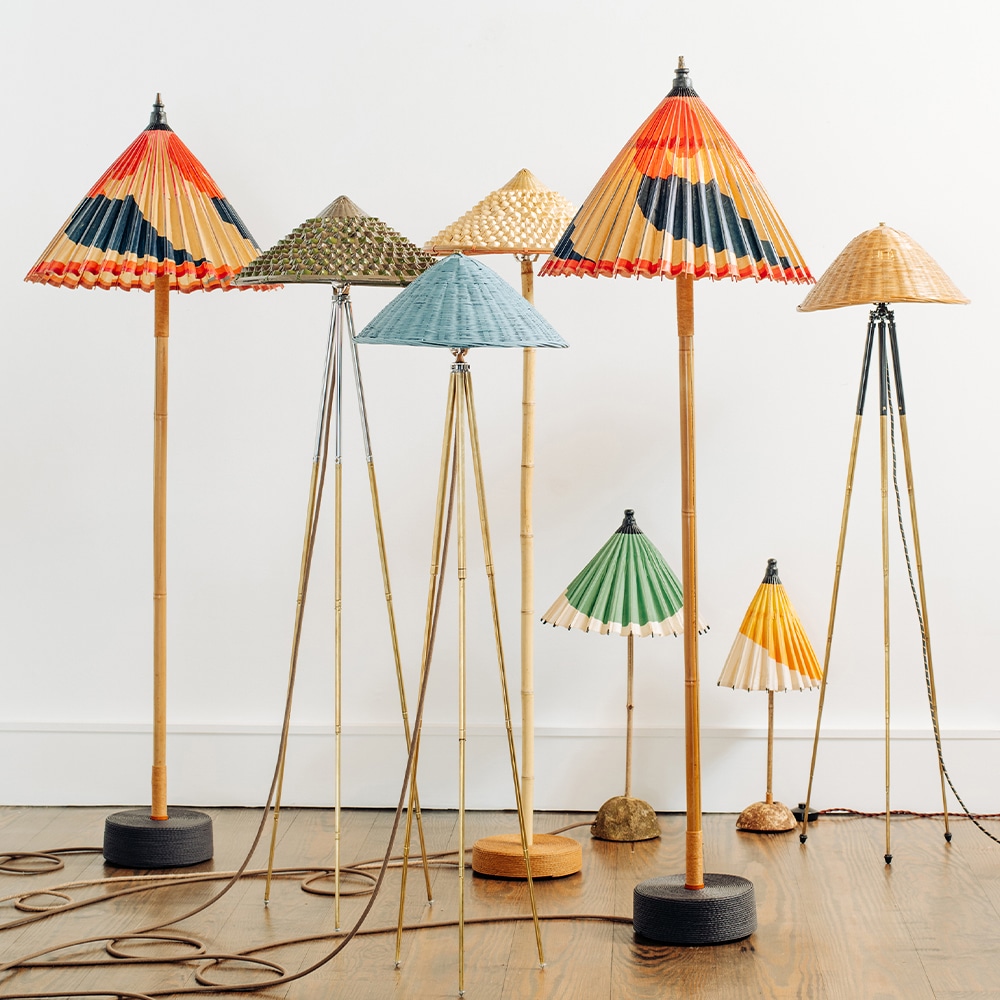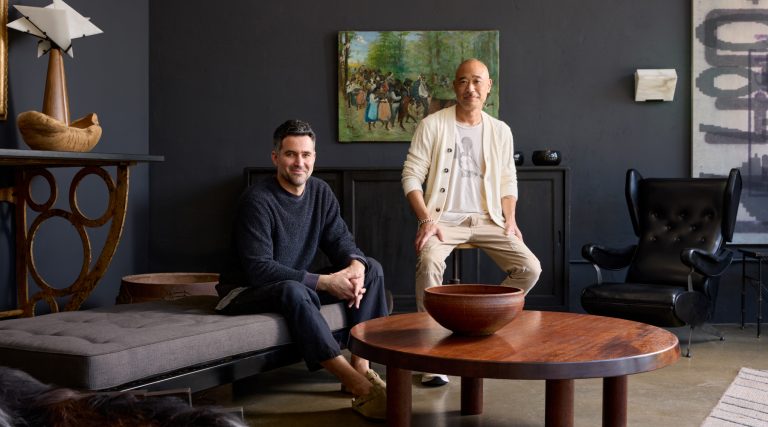July 7, 2024In a practice that includes architecture, interiors and furniture design for residences and commercial spaces — as well as custom commissions for electric vehicle maker Rivian, comedian John Oliver and actor Courteney Cox — the founders of Los Angeles–based Klein Agency follow their intuition as much as their intellect. Since the release of their first furniture collection less than a decade ago, husband and wife Jon and Maša Kleinhample have honored their impulses and learned as they went.
“We try to come at projects in an unknowledgeable way — we start with a vision and exhaust all the different ways we can achieve it,” says Jon, who deploys his expertise at 3-D architectural visualization to work with local manufacturers who can rapidly create prototypes and fill customizable orders on demand.

“What inspires me are the mechanical processes and putting natural materials like wood, aluminum and leather together simply,” says Maša, embracing the ideals of Bauhaus director Ludwig Mies van der Rohe and 20th-century modernists like Poul Kjærholm. “I work very hard to keep us hyper-local — everything is made at factories within a five-mile radius,” she adds. “And we like elevating manufacturing details as a design component in a piece of furniture rather than just an assembly part.”
This methodology gave birth to Klein’s sleekly proportioned minimalist furniture, which debuted in the company’s 2017 Volume I collection of laser-cut steel-framed seating. Volume II, built around seating designs for Los Angeles restaurant projects, appeared in 2019. Their latest capsule, Volume III, was recently launched on 1stDibs and is currently on display at Klein Annex, a gallery and community space that opened this May in L.A.’s Silver Lake neighborhood, just a few blocks down Sunset Boulevard from Klein Studio.


Among the Volume III pieces is the Slat bench, made of intersecting boards of solid, vertical-grain Douglas fir. “Since starting our work as Klein, we’ve been persistently drawn to solid wood,” Maša notes. “We love the ability of finely crafted wood pieces to age well with time and travel through generations, collecting all the stories and carrying them proudly on the surface patina.”
Also in the collection is the Pillow sofa, whose aluminum frame highlights the angles and voids created by the press brake, a machine that bends sheet metal into shape. “The sofa is completely modular,” Jon remarks on a recent day at Klein Annex, pulling a plump cushion covered in Ria fabric by Raf Simons for Kvadrat off the aluminum frame. “It’s great for kids and pets to climb and jump on, and you can unzip the cover and throw it in the wash.”

Now the parents of two young children and an Australian shepherd, Jon and Maša began their love story and creative partnership after meeting randomly on the dance floor at a Berlin basement club in 2009.
Jon, an American and the son of an engineer father and illustrator mother, had earned a BArch from the University of Southern California in 2008 and worked for architect and educator Neil Denari, in Los Angeles, and Asymptote Architecture, in New York, before joining Barkow Leibinger, in Berlin. Maša, the Slovenian daughter of an engineer father and schoolteacher mother, was earning a master’s degree in public policy from Berlin’s Hertie School.
When Maša took a job as a policy advisor at the EU parliament in Brussels, in 2011, Jon followed six months later. While freelancing for architectural firms, he established an art studio, LMBRJK, and began building free-form vases and stools from computer-cut pieces of plywood veneer, which the pair painstakingly glued together by hand.

By 2014, Maša had become disillusioned with international politics, and she and Jon were ready to build a business together. They fell in love with a carriage house in the old harbor of Antwerp. “We did not know a single person in Antwerp at the time, but we felt more connected to the design scene there and thought it was a better place to launch Klein,” Jon recalls. A year later, the newly married couple had converted the carriage house into a living space and a studio for their enterprise, an entrepreneurial project they documented as the authors of Microfactories: Move Aside, Mr. Ford, a 2016 book that also profiles such designers as Piet Hein Eek and Stephen Kenn.
Using a 12-seater table Jon designed, they began hosting a dinner club as a way to connect with other creatives in Antwerp. “We had three thousand people on a waiting list,” Maša says. “I was cooking five nights a week, every week.”


They moved to Los Angeles in 2017 to help care for Jon’s ailing mother and quickly found commissions, including two stylish restaurants (Auburn and Bon Temps, which are now closed) for which they created pieces that were later released as Klein’s Volume II collection.
These days the Kleinhamples live in a post-and-beam house designed by famed California modernist Edward Fickett, with a 1984 Porsche 911 and a 1971 Ford Bronco in the garage. The home’s interiors are furnished with antiques, among them a Shaker-style table where their children play games and do homework; such 20th-century classics as an Eames 670 lounge chair and Parentesi floor lamp (a 1971 collaboration between Achille Castiglioni and Pio Manzù); and contemporary designs like Brendan Ravenhill’s Grain pendant light.
Here, the duo talk with Introspective about taking inspiration from mid-century masters and growing families, designing for dream projects and the power of patina.

Which piece that you currently offer exemplifies the Klein aesthetic?
Maša: Our Marshmallow chair strips down everything unnecessary, revealing just the sheet-aluminum frame and the upholstered cushions that fit inside it. Our stuff is clearly minimalism, super simple to put together but also durable and, as we now have kids, cozier and more playful. The cushions on the Marshmallow chair are much softer than many contemporary designs. They hug you.
Who are the designers that inspire you?
Jon: Hans Wegner is the chair master and makes me want to keep doing chairs forever. We love Mario Bellini’s sofas, as well as Michel Ducaroy and his Togo. And Achille Castiglioni for his childlike fascination with form — everything was pure and basic. We also love the Bouroullec brothers for their sense of playfulness and precision. And I’m obsessed with stereo speakers from OJAS’s Devon Turnbull.
Maša: We love Tyler Hays’s work for BDDW. I scored and got one of their ceramic toilet-paper holders at an auction, and we actually have it hanging in our studio. The Ciguë studio, in Paris, is fascinating — they mix architecture and product design with a strong sense of materiality, which we do. Having lived in Antwerp, we know there’s something magical in the air around Belgian architecture and interiors by Vincent Van Duysen, Axel Vervoordt and Hans Verstuyft.


Which items from your home do you love too much to ever part with?
Jon: If you’re talking about something we made, it would be the Rocker One, from our Volume I collection, made with a laser-cut sheet-steel frame and a leather sling. It’s been in two floods, and the leather seat has aged so beautifully that I would never sell it. Of course, it’s the one piece that everyone who sees it wants to buy.
Maša: I don’t think I would sell our Konstantin Grcic Mayday lamp for Flos, which has a cast-aluminum handle engraved with a serial number and his signature.
Jon: His work represents the idea of controlled geometry with a German kind of playfulness. We met him at a horse race in Berlin, and he’s so badass.
What designs do you covet?
Jon: The first thing that comes to mind is the Poul Kjærholm PK 54 dining table and his three-legged, stainless-steel PK 33 stool with the leather cushion. And for contemporary designers, it would be the Céramique collection of lighting by Ronan and Erwan Bouroullec for Flos.
Maša: I would love to have an original painting by the Australian artist CJ Hendry and a Dirk van der Kooij Meltingpot table — I’m trying to understand the world of recycled plastics.

Are there other materials you’d like to investigate?
Jon: We’re into all the major industrial processes and taking them into the art world and producing at a smaller scale. I am fascinated with casting bronze. It’s about the idea of not being able to control the process. You make a mold, but the form is always contaminated by the human hand.

Speaking of which, how do you advise clients about maintaining your designs?
Maša: For our solid-wood tables and chairs, like our Balloon stool, we use a magical product called Oil Plus 2C from Rubio Monocoat. It’s a mix of wax and oil that takes seven days to cure. We apply it twice, and it keeps the wood looking natural, unlike polyurethane, and if you spill wine on it, it just beads up. There’s a constant conversation we have with clients about aluminum, which we use in our Puddle tables. Aluminum will never be scratchless, and it will get a darker patina. That’s part of the appeal of metal. We had a stainless-steel kitchen that was all scratched up, and it looked beautiful to us. But you can always use a sanding block on aluminum.
Jon: We are huge proponents of letting leather age naturally. On our Rocker One, Bar Stool GH and Lounge Chair GH, we use vegetable-tanned saddle leather, and both UV rays and the oils on your skin will darken it. It starts almost white, goes to a pinky orange and will end up the color of cognac. We have a long disclaimer for clients telling them to embrace it. A little bit of saddle oil, like lotion for your skin, helps the aging process. It will have an awkward teenage phase where it will look weird, and it will never be perfect, but it will be the piece you want to give your children.

What do you fancy designing that you haven’t already done?
Jon: I’d like to do a freestanding bar, forty-two inches high, a lean-to piece. Not like a bar in a corner — a bar set off the wall with a nineteen-fifties feel, because entertaining is a big deal for us. And I’m developing a jacket with the L.A. menswear company Smock.
Maša: I am fascinated by the idea of making a kitchen island that can float in a room, self-contained and fully functional, with a sink, countertop, refrigeration and cooking appliances.
Having done homes, studios, restaurants and retail, is there a space that you’d like to tackle next?
Maša: Oh, yes, a renovation of an existing hotel on the Amalfi Coast! We both love the idea of designing a space where people go to escape their daily life and yet feel at home immediately, like Nine Orchard, in New York City, or Vincent Van Duysen’s Graanmarkt 13, in Antwerp, which is a concept store and restaurant with a one-room hotel on top.
Jon: L.A. should have something like that. Definitely.

